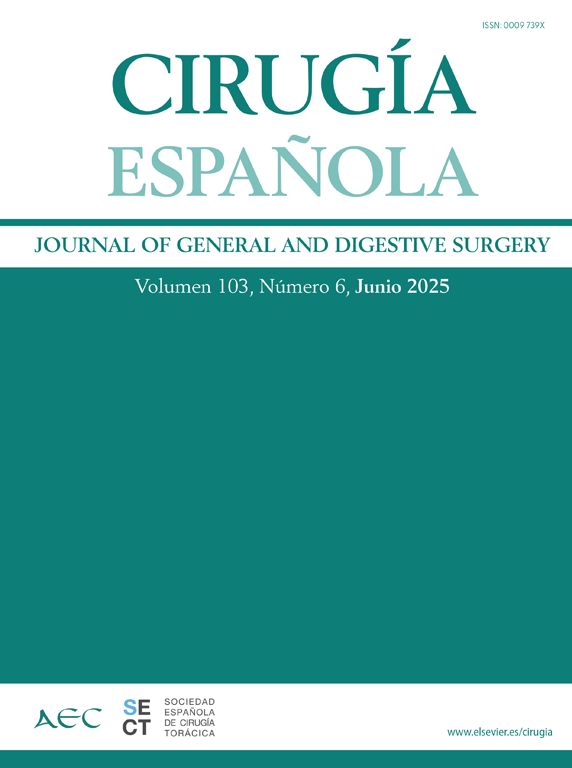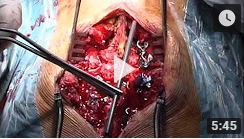Cualquier artículo que se envíe a esta revista seguirá las pautas que se describen en la sección "Ética en la publicación" de esta guía para autores, por lo que es imprescindible consultarla antes de enviar los manuscritos.
Para cualquier sección de esta revista, excepto las cartas al editor, los tres epígrafes: Consideraciones Éticas, Financiación y Conflicto de Intereses deben agregarse en la Primera página.
Consideraciones éticas: si el trabajo implica el uso de sujetos humanos, el autor debe asegurarse de que el trabajo descrito se haya llevado a cabo de conformidad con el Código de
Ética de la Asociación Médica Mundial (Declaración de Helsinki) para experimentos con seres humanos; Requisitos de uniformidad para manuscritos enviados a revistas biomédicas. Los autores deben incluir una declaración de que se obtuvo el consentimiento informado para la experimentación con sujetos humanos, y se realizaron todos los procedimientos éticos. Siempre se deben respetar los derechos de privacidad de los sujetos humanos. La aprobación del Comité Ético de Investigación Clínica (CEIC) o el comité correspondiente debe indicarse en este epígrafe.
Financiación: se le solicita que identifique quién brindó apoyo financiero para la realización de la investigación y / o preparación del artículo y que describa brevemente el papel del patrocinador (es), si corresponde, en el diseño del estudio; en la recopilación, análisis e interpretación de datos; en la redacción del informe; y en la decisión de enviar el artículo para su publicación. Si la (s) fuente (s) de financiamiento no tuvieron dicha participación, entonces esto debería ser declarado.
Conflicto de intereses: todos los autores deben especificar la existencia de cualquier tipo de relación financiera y personal con otras personas u organizaciones que puedan haber influido en su trabajo, incluso si no se relaciona directamente con el manuscrito actual.
Los ejemplos de posibles intereses competitivos incluyen empleos, consultorías, propiedad de acciones, honorarios, testimonios de expertos remunerados, solicitudes /
registros de patentes y otros fondos, así como subvenciones de viajes y la participación en cursos y conferencias como experto remunerado. Si no está presente ninguna de las condiciones anteriores se debe indicar: "Declaraciones de interés: ninguna".
Para todos los tipos de artículo, el contenido de los manuscritos aceptados incluyendo texto, imágenes, tablas, etc. podrá ser utilizado en las redes sociales de la revista con el objetivo de dar mayor visibilidad al artículo.
Editoriales: Salvo excepciones, su redacción se hará por encargo del Comité Editorial sobre un tema de actualidad, que se refiera o no a un artículo que se publique en el mismo número de Cirugía Española. Habitualmente tendrá una extensión de 800-1.000 palabras con un máximo de 15 citas bibliográficas. Se prefiere que sólo haya un autor.
Originales: Descripción de investigaciones clínicas, experimentales o técnicas que contribuyan a ampliar el conocimiento sobre un tema quirúrgico. Los artículos originales deberán seguir el formato de Introducción, Métodos, Resultados y Discusión. La extensión máxima del texto será de 2.500 palabras y se admitirán hasta 6 figuras o tablas. Es indispensable incluir un resumen estructurado, en español e inglés, con una extensión no superior a las 250 palabras. Tras el resumen se incluirán entre 3 y 8 palabras clave. El número máximo de autores será de 8. En caso de manuscritos con más de 8 autores, se deberá justificar la razón en la carta de presentación al Comité Editorial.
Los investigadores que desarrollen un ensayo prospectivo aleatorizado deberían consultar la última versión de los criterios CONSORT (ver más adelante).
Es obligatorio presentar un resumen gráfico (graphical abstract) en esta sección, ver indicaciones más abajo.
Revisiones sistemáticas: Cirugía Española dará prioridad a las revisiones sistemáticas y los Metaanálisis. La extensión máxima del texto será de 3.500 palabras y se admitirán hasta 6 figuras o tablas. Es indispensable incluir un resumen sin estructurar, en español e inglés, con una extensión no superior a las 150 palabras. Tras el resumen se incluirán entre 3 y 8 palabras clave.
Los autores deberán seguir las recomendaciones propuestas por: PRISMA (http://www.prisma-statement.org/).
Es obligatorio presentar un resumen gráfico (graphical abstract) en esta sección, ver indicaciones más abajo.
Artículos especiales: En esta sección se incluirán artículos relacionados con la Cirugía General y del Aparato Digestivo que por sus características no puedan considerarse para la sección Originales o Revisiones. La extensión máxima del texto será de 3.500 palabras y se admitirán hasta 6 figuras o tablas. Es indispensable incluir un resumen sin estructurar, en español e inglés, con una extensión no superior a las 150 palabras. Tras el resumen se incluirán entre 3 y 8 palabras clave.
En esta sección no se aceptarán casos clínicos.
Innovación en técnica quirúrgica: Este tipo de manuscrito puede describir una nueva técnica quirúrgica o bien modificaciones originales o nuevas indicaciones de una técnica ya conocida. El manuscrito tiene que tener un resumen en español no superior a las 150 palabras, no estructurado y traducido al inglés. El manuscrito debe ser dividido en las siguientes secciones: introducción, técnica quirúrgica (indicaciones y detalles técnicos), discusión (aspectos relevantes, justificación, ventajas y desventajas en el contexto de otras técnicas y estudios publicados que sean el antecedente de la técnica propuesta) y bibliografía. En la sección técnica quirúrgica cabe mencionar el número de pacientes en los que se ha realizado la técnica así como sus indicaciones. El número de palabras del texto (excluyendo resumen y bibliografía) no deberá superar las 1.500. El número máximo de autores es 4. Es muy conveniente que el artículo esté ilustrado con imágenes de calidad, esquemas, dibujos o fotogramas originales que detallen los aspectos técnicos. Una vez aceptado el manuscrito, el Comité Editorial invitará a un experto a comentar la técnica propuesta y su relevancia.
Cartas científicas: En esta sección el Comité Editorial de Cirugía Española valorará estudios de series de casos de pacientes en los que se describen aspectos nuevos o se añaden valoraciones relevantes sobre los mecanismos de la enfermedad, su diagnóstico o el tratamiento. Solo se admitirán a valoración aquellos casos clínicos únicos que aporten una excepcionalidad muy destacada. La extensión máxima será de 850 palabras y el texto no se estructurará en apartados. Se aceptarán 2 figuras o tablas. La bibliografía no debe superar las 10 referencias. Las cartas científicas no irán acompañadas de resumen. El número máximo de autores será de 5.
Cartas al Director: Se evaluarán cartas con objeciones o comentarios relativos a artículos publicados recientemente en la Revista y, en algunos casos, sobre artículos relevantes publicados en otras revistas. Esta correspondencia debe contener ideas interesantes y comentarios que siempre estén apoyados por datos y referencias bibliográficas. Todas las cartas serán revisadas por el Comité Editorial y, en caso de ser aceptadas, se publicarán en la Revista. Siempre que sea posible, se publicará simultáneamente la carta con la respuesta de los autores del artículo comentado. La extensión máxima será de 450 palabras. El número máximo de autores será de 4.
Imagen del mes y videos: Bajo esta categoría se incluyen las imágenes médicas o quirúrgicas que tengan un valor educacional, así como los videos. En las imágenes, la extensión máxima del texto será de 100 palabras. La calidad de la imagen deberá ser al menos 600 puntos por pulgada (dpi) y en formato TIFF o JPEG. Se deberá indicar al final del texto, y de manera diferenciada del mismo, el diagnóstico del caso. El número máximo de autores será de 4. En el caso de los videos, los autores enviarán un breve texto de un máximo de 100 palabras. La duración del video no será superior a 4 minutos, ver instrucciones detalladas más adelante. Para los videos se enviarán dos ficheros, uno con audio en español y otro con audio en inglés.
Perspectivas Quirúrgicas
Estos artículos abordarán de forma práctica cualquier tema relevante y de actualidad relacionado con la salud o la medicina en general y que son de interés específico para la profesión de la cirugía. Los temas de estos artículos pueden incluir calidad o seguridad quirúrgica, reembolso quirúrgico, educación quirúrgica u otros problemas a los que se enfrenta la profesión. Como todos los artículos publicados en la revista, estos artículos serán revisados por pares.
Los artículos no deben tener más de 3 autores. Longitud máxima: hasta 1200 palabras de texto, o 1000 palabras de texto con 1 tabla o figura pequeña, y no más de 10 referencias.
Protocolos de Estudio
Estos manuscritos describirán de forma pormenorizada un proyecto de investigación o protocolo de estudio que se va a desarrollar de forma prospectiva. Es recomendable que el estudio esté registrado oficialmente, incluyendo en el manuscrito el número de registro y fecha del mismo y que se no haya superado el 50% del reclutamiento de casos sobre el tamaño muestral calculado.
La extensión máxima de palabras será de 3000 y el número de autores no será superior a 8, si fuera imprescindible superar los 8 autores deberá de justificarse la contribución de cada uno de ellos.
Los protocolos de estudio tendrán un máximo de 4 figuras y tablas.
El titulo deberá de presentarse tanto en español como en inglés. El resumen tendrá un máximo de 250 palabras (incluyendo número de registro) y deberá de ir acompañado de palabras clave que definan el estudio (de 3 a 8). El protocolo contará con introducción, Hipótesis principal y secundaria, Métodos y Diseño (donde se justificará los métodos estadísticos y el tamaño muestral, especificando claramente criterios de inclusión y exclusión del estudio), discusión y bibliografía con un máximo de 15 referencias.






